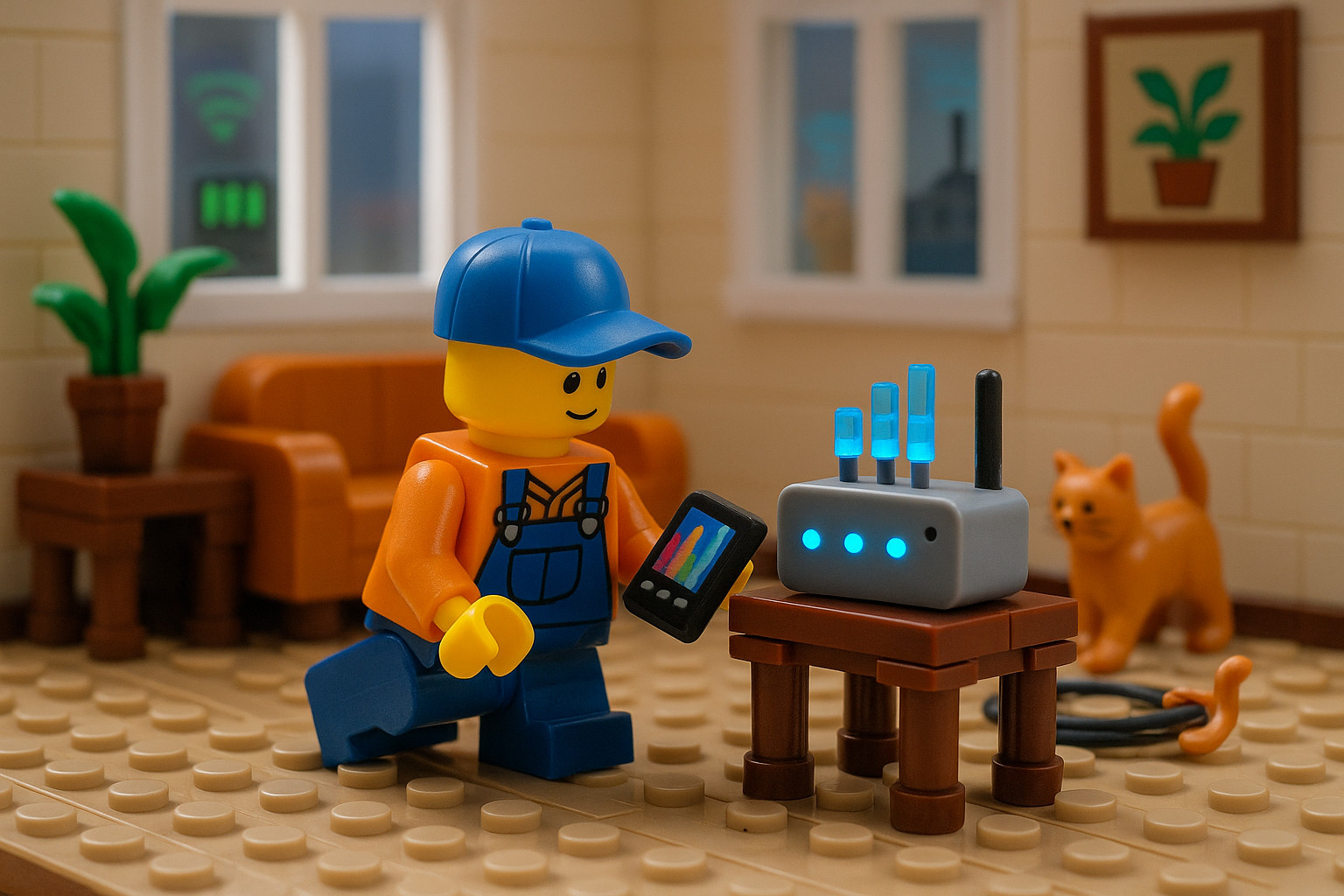Router Settings That Make a Difference in Small-Town Homes and Apartment Buildings

Table of Contents
Router Settings That Make a Difference in Small-Town Homes and Apartment Buildings#
Most routers “just work” out of the box, but factory defaults aren’t tuned for rural homes or apartment buildings. With a few thoughtful tweaks, you can boost signal strength, reliability, and security — and actually understand what your router is doing.
(Fun fact: many routers run a compact version of Linux internally, acting like tiny embedded computers that manage Wi-Fi, routing, and firewalls.)
The Basics — Why Router Settings Matter#
- Routers are miniature computers managing how devices share the airwaves.
- Interference, old building materials, and default settings can cripple performance.
- In towns like Kirksville, many homes mix older wiring, thick walls, and competing networks — making configuration more important.
Placement and Channels — The Physical Layer Still Rules#
Router Placement#
- Keep it central, off the floor, and away from metal or large appliances.
- 2.4 GHz travels farther but is slower; 5 GHz and 6 GHz are faster but don’t penetrate walls as well.
Channel Selection#
- The “Auto” setting often chooses busy channels.
- Scan your environment using free tools like WiFiman or NetSpot.
- In Kirksville, many routers crowd channel 6 — try 1 or 11 on 2.4 GHz to improve stability (this is a generalism due to default settings).
Security and Firmware — The Invisible Fixes#
Update the Firmware#
- Firmware updates patch vulnerabilities and improve performance.
- ISP routers rarely update automatically — check the manufacturer’s website every few months.
Use Strong Encryption (WPA3 or at least WPA2)#
- WEP and “open” networks are unsafe and outdated.
- If your router supports WPA3, enable it for better protection.
Change Default Admin Credentials#
- “admin / password” is basically an open door.
- Create unique login credentials and store them securely.
Bandwidth Management — Keeping Peace in Shared Spaces#
Quality of Service (QoS)#
- QoS prioritizes important traffic like video calls, gaming, or streaming.
- Assign high priority to devices that need stability (work laptop, TV box).
Guest Networks#
- Guest Wi-Fi keeps visitors separate from your main network and devices.
- A simple toggle that adds both security and sanity.
Advanced Options for Curious Users#
VLANs (Virtual LANs)#
- Think of VLANs as separate traffic lanes on the same road.
- They keep devices like security cameras or roommates’ gear isolated.
Static IPs and DHCP Reservations#
- Assigning fixed IPs to printers, TVs, or servers prevents connection issues.
- Makes port forwarding and troubleshooting easier.
Disable Unused Services#
- Turn off WPS, UPnP, or remote management if not needed.
- Every unnecessary service is another possible vulnerability.
When the Hardware Itself Is the Bottleneck#
- ISP-provided routers often have limited range and control.
- Consider better hardware from TP-Link, Asus, or Ubiquiti.
- For larger homes or multi-floor buildings, mesh systems provide seamless coverage.
Rural Bonus — Coping with Weak or Shared Internet Links#
- Some routers support LTE or 5G failover for backup connectivity.
- Load balancing helps when combining two connections.
- Smart QoS rules can make limited bandwidth feel much smoother.
Final Checks and Maintenance#
- Reboot monthly or on schedule.
- Update firmware every few months.
- Back up your router’s configuration before changes.
- Test speed periodically with Speedtest.net or PingPlotter.
Closing#
A well-configured router isn’t just faster — it’s quieter, safer, and more reliable.
In small towns and shared buildings, every megabit counts.
When your network behaves, everything else feels faster.